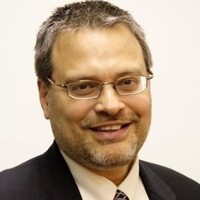
Louis Hoffman
Founder
IP Protection Law Group
Louis Hoffman is the president and founder of the Hoffman Patent Firm and a partner and founder of IP Protection Law Group. He is Chairman of the Board of NAPP. Louis has been an intellectual-property lawyer for more than 30 years. Louis’s law practice focuses on commercialization through sales, licensing and enforcement of valuable patents, patent portfolio development, and patent prosecution. His clients include inventors, operating companies, and start-ups. He has a particular knack at identifying and securing patent claims that can provide added value to patent portfolios. Louis has substantial experience managing litigation and licensing programs of all sizes. Aside from patent matters, Louis sometimes works on copyrights and trademarks (U.S. and foreign), license drafting, and contract matters.

Recent Articles by Louis Hoffman
As we await the next Update from the Patent Office on subject matter eligibility, it may be worthwhile to consider further the role of examples given in the past by the PTO. The Patent Office’s July 2015 Update on Subject Matter Eligibility. Although examples of this sort can be helpful and are appreciated, they are not enough! In the Internet and computer arts, the existing examples offer limited use. The PTO has released only a few examples in the computer fields still, and in general they express fairly obvious points, such as the point that improvements to the computer itself remain eligible.
Although categorizing abstract ideas could be helpful, the use of categories expands the risk of overbreadth, especially when the categories have little definition, include sub-categories, and lack negative examples. The PTO should refine the categories of “judicial descriptors,” and do so both negatively and positively, to avoid overbroad application of Alice by examiners. The use of “judicial descriptors” not supported adequately by court decisions has the potential to do great mischief in the area in which I practice frequently, i.e., software and Internet-related patent applications.

![[IPWatchdog Logo]](https://ipwatchdog.com/wp-content/themes/IPWatchdog%20-%202023/assets/images/temp/logo-small@2x.png)
